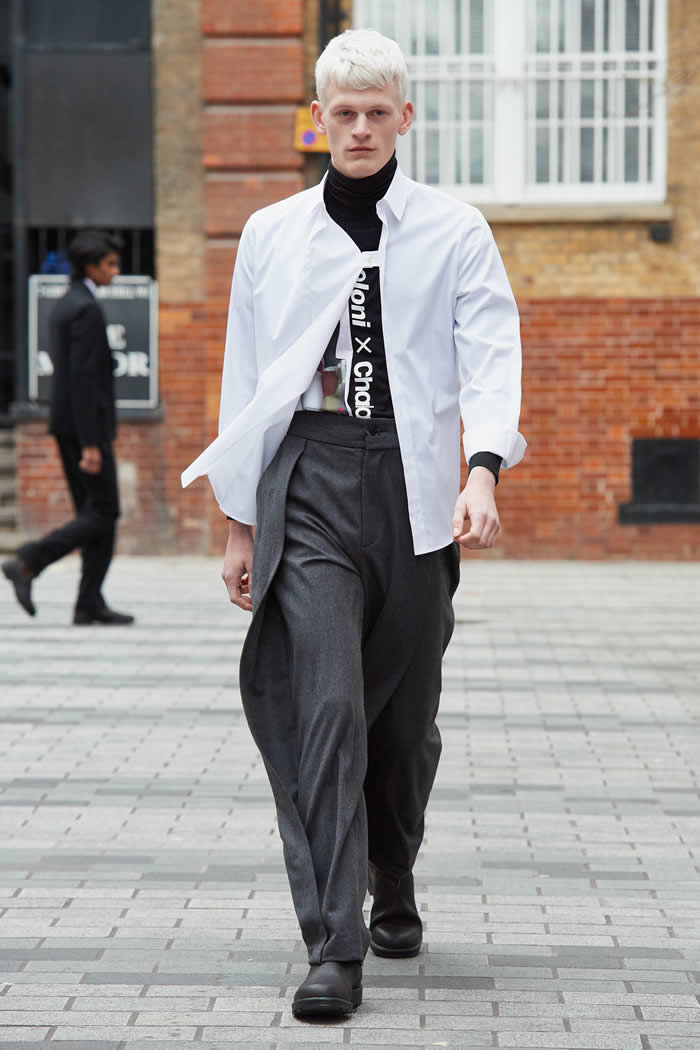This pattern encapsulated Hussein Chalayan’s roundabout approach to a collection, which as a destination merited the journey: from a tri-pocketed, laterally vented parka to a split-armed, patch-pocketed black woolen jacket, there were some notably novel garments here.
Chalayan’s mood board featured a mix of photographs of indigenous Australians from Arnhem Land to Tiwi, and the designer explained that the Aboriginal concept of songlines—ancient routes across the land that are navigated through recital of song—had inspired a collection through which he attempted to navigate his own creative landscape afresh.
“I asked myself, Could I look at my environment through that sentiment, and actually describe the environment, or use it as a means for designing?”
That question led Chalayan to fresh draping ideas with which to negotiate and accentuate the negative space around the bodies of his Blundstone-shod models. The opening and closing looks, almost monastic, best exemplified this approach.
He also cited Asian ceremonial wear as the inspiration for some ties, twists, and flourishes. There were key Chalayan signatures such as strapping, shoulder-sheathing jackets and coats, and dramatically draped pant shapes.
Especially lovely was a reinvented duffle coat, collarless and distinctly tailored, as well a tough-looking, asymmetrically designed boiler suit in the same attractive washed cotton as the parka.
Some might argue that using another culture’s metaphysical perspective as a design tool is a potentially dubious appropriation, but Chalayan’s approach seemed more an act of learning than of acquisition—and the lessons he drew certainly served to expand the universe of his work.

